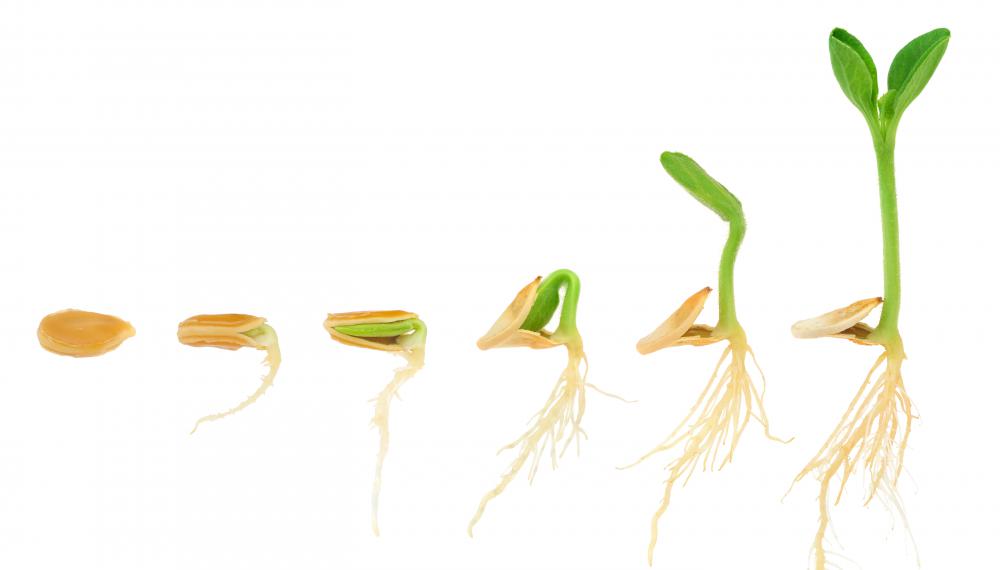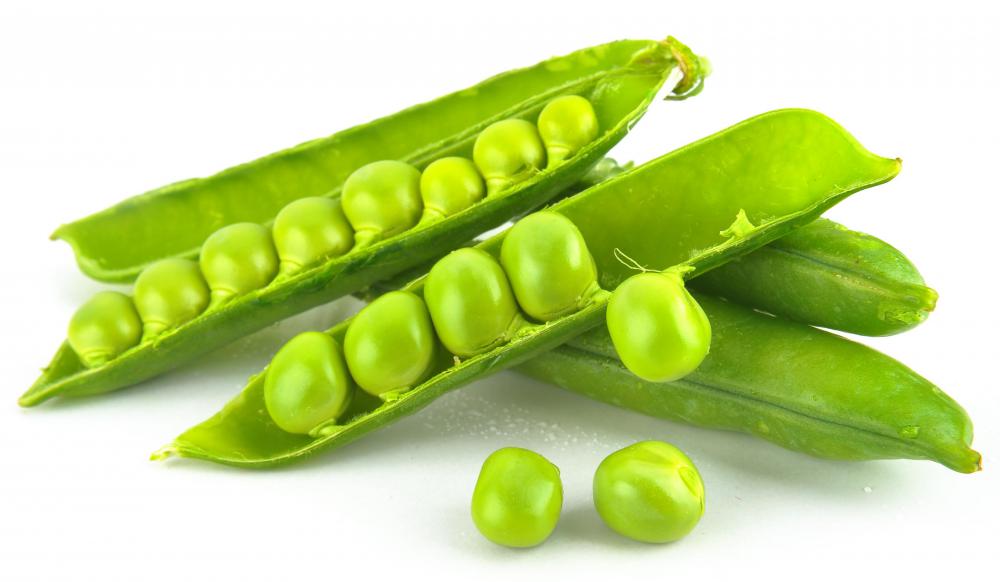At AllThingsNature, we're committed to delivering accurate, trustworthy information. Our expert-authored content is rigorously fact-checked and sourced from credible authorities. Discover how we uphold the highest standards in providing you with reliable knowledge.
What Is the Role of Amylase in Plants?
Amylase is an enzyme that acts as a catalyst to hydrolyze carbohydrates. The role of amylase in plants is for breaking down starches. Starches are usually processed in this way during seed germination, and turned into sugars. These sugars then provide the main source of energy for the plant during its early development.
Plants are able to store energy from the sun by creating sugars. Amylase assists in the initial development of the plant, before it is able to use energy from photosynthesis. The amylase enzymes begin their role in plant development as the plant's seed begins to germinate, root, and sprout.

In a study of the germination of cereal seeds, alpha amylase was found in the aleurone layer. The amylase works to hydrolyze the endosperm starch into usable sugars. These sugars provide the necessary energy for root growth and act as reserve food storage. Amylase in plants is important for the production of healthy shoots, so they form properly.
Enzymes react to temperature. As the ground warms, the amylase in the seed becomes more active. Since the amylase in plants acts as a food storage reserve as the plant grows, temperatures that are too high will typically cause the enzymes will stop functioning. For this reason, seeds that are exposed to high temperatures will not be able to sprout.

Gibberellins are also involved in the process of germination and early plant development. A tetra cyclic diterpene acid, gibberellin is believed to signal the start of the amylase process in the cells for starch-to-sugar conversion. The gibberellin becomes a chemical messenger for the plant embryo.
There are several basic forms of amylase, including alpha amylase, beta amylase, and glucoamylase. Alpha amylase heps to process basic substances like glycogen and starch, and can be found in the tissues and organs of many mammals, including humans. It works by breaking random bonds in the viscosity of starches, and produces glucose.
Beta amylase is abundant is seeds. It can also be found in molds, bacteria, and yeasts. This form of amylase breaks glucose-to-glucose bonds and produces maltose. Glucoamylase, or amyloglucosidase, break bonds and subsequently produces glucose.
Plants have both alpha and beta amylase, while animals have only alpha amylase. In humans, alpha amylase is found in saliva. Certain plants are known to be particularly high in amylase enzymes, including peas, corn, and barley. Without the presence of amylase, a seedling would not be able to grow to reach the sunlight needed for photosynthesis and healthy growth.
Frequently Asked Questions
What is amylase and what role does it play in plants?
Amylase is an enzyme that plays a crucial role in plants by breaking down starches into simpler sugars like maltose and glucose. This process is essential for plant growth as it provides the necessary energy for various cellular activities. During germination, amylase helps convert stored starch in seeds into sugar, fueling the growth of the seedling.
How does amylase affect seed germination?
During seed germination, amylase is synthesized and activated to break down the starch reserves within the seed. This enzymatic activity is vital for providing the energy needed for the emerging seedling to grow until it can produce its own energy through photosynthesis. Without amylase, seeds would struggle to sprout and establish themselves.
Where in the plant is amylase primarily found?
Amylase is primarily found in the seeds and storage organs of plants, such as tubers and bulbs. It is particularly concentrated in areas where starch is stored as an energy reserve. For instance, in germinating seeds, amylase is synthesized in the aleurone layer, which surrounds the endosperm, the tissue that contains the starch reserves.
Does amylase have a role in plant defense mechanisms?
While amylase's primary function is related to energy mobilization, some studies suggest that it may also play a role in plant defense. Certain forms of amylase can act as pathogenesis-related proteins, helping to defend against pests and pathogens by degrading their starch sources or by disrupting their metabolism.
Can amylase activity in plants be affected by environmental factors?
Yes, amylase activity in plants can be influenced by environmental factors such as temperature, water availability, and nutrient levels. Optimal conditions are required for the enzyme to function effectively. For example, extreme temperatures can denature amylase, reducing its activity, while adequate water is necessary for the enzyme to access starch molecules.
Is amylase found only in plants, or is it present in other organisms as well?
Amylase is not exclusive to plants; it is a widespread enzyme found in many organisms, including humans, animals, and microorganisms. In humans and animals, amylase plays a key role in digesting dietary starches. Microbial amylases are also industrially important and are used in processes such as brewing, baking, and textile manufacturing.
AS FEATURED ON:
AS FEATURED ON:












Discuss this Article
Post your comments